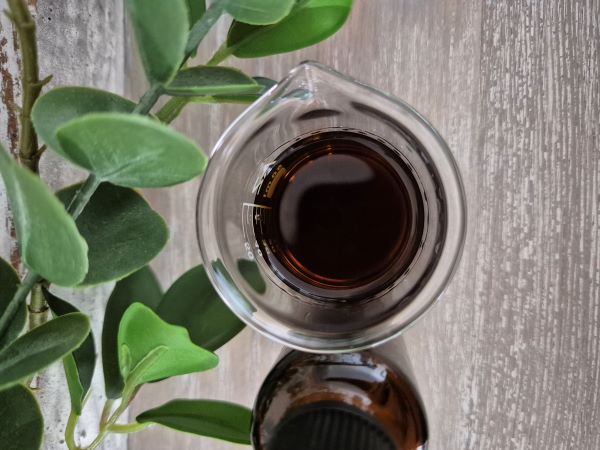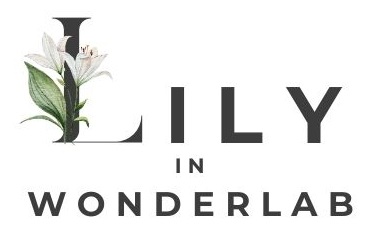Let me introduce you to Centella Asiatica, also called Gotu Kola and known as Cica in Korean Beauty. This exceptional herb, celebrated in traditional medicine and now backed by modern science and skincare, is a powerful ally for your DIY Skincare.
Centella Asiatica does what it promises, boosting collagen, healing irritated skin, calming redness and deeply hydrating our skin.
In this guide, I’ll walk you through how to make a Centella asiatica extract at home, explain why the solvent you choose really matters and help you understand the benefits you can expect based on the latest cosmetic research. 
The Proven Benefits of Centella Asiatica in Skincare
Let’s break down what science says this amazing plant can do for your skin and why:
- Collagen Production & Firmness: Centella contains powerful compounds like asiaticoside and madecassoside that stimulate fibroblasts, the skin cells that produce collagen and elastin. This means firmer, more elastic skin and reduced appearance of wrinkles over time.
- Wound Healing & Skin Repair: The same compounds speed up wound healing by encouraging tissue regeneration. Great for post-acne marks and scars.
- Deep Hydration & Skin Barrier Strength: Its sugar-rich molecules (saponin glycosides) attract and bind water, improving skin moisture and reducing water loss. Centella can significantly increase hydration and restore a damaged skin barrier.
- Anti-Inflammatory & Soothing: Centella helps calm redness, irritation and inflammation, especially in sensitive or reactive skin. It suppresses inflammatory enzymes and boosts the skin’s own calming response.
- Antioxidant Protection: Thanks to polyphenols and flavonoids, Centella defends our skin from oxidative stress and environmental damage.
Why the Solvent Matters (and What It Actually Is)
To make a powerful extract, we need to soak the dried Centella leaves in a liquid called a solvent. The solvent draws out the active compounds from the plant. However, you have to be mindful: different solvents extract different types of molecules, and this will change the effects of your final extract.
So, choosing the right solvent is essential: it's like choosing the right lens to focus your extract’s purpose. There are three main solvent options that are suitable for natural DIY beauty and effective:
1️⃣ 50% Alcohol / 50% Water (Hydroalcoholic Extract)
- What it extracts: A wide range of active ingredients, including asiaticoside, madecassoside, and their more potent aglycone forms (asiatic acid and madecassic acid), plus antioxidant flavonoids.
- Benefits: Best for collagen production, firming, wound healing and strong anti-inflammatory effects. It has the broadest chemical profile.
- Downsides: It contains alcohol, so may be too drying for ultra-sensitive or dry skin types.
2️⃣ 50% Glycerin / 50% Water (Hydroglycerin Extract)
- What it extracts: Mainly hydrophilic (water-loving) compounds like asiaticoside and madecassoside, plus some antioxidant polyphenols. Doesn’t extract the aglycones.
- Benefits: Ultra-hydrating, calming, skin barrier-strengthening, and gentle, great for dry or sensitive skin. Choose this option in case of sensitive skin and if you are especially interested in a very strong and immediate hydrating boost.
- Downsides: Slightly less potent in collagen-stimulation and wound healing compared to alcohol-based extracts.
- Preservation notes: It’s autopresenrving, but it’s better to add a 0,6% of Cosgard or similar preservative to be on the safe side.
3️⃣ 1/3 Water, 1/3 Alcohol, 1/3 Glycerin (Balanced Extract)
- What it extracts: A well-rounded profile of both glycosides and aglycones, antioxidants and more, combining the benefits of both previous solvents.
- Benefits: Excellent for all-around skincare: hydration, firming, soothing and healing. It’s versatile and suitable for most skin types. Boosts collagen production.
- Downsides: It contains alcohol, but less than the 50% alcohol / 50% water version.
As a side note, oils are not effective solvents for extracting Centella asiatica's key bioactive compounds. Find more info about it at the bottom of this article.
How to Make Your Own Centella Asiatica Extract
- Step 1: Pick your solvent
Choose one of the three blends above, depending on your skincare goals and evaluating pros and cons. If in doubt, go for the balanced version (1/3 Water, 1/3 Alcohol, 1/3 Glycerin). - Step 2: Measure your ingredients
Example: To make 100g of Hydroalcoholic extract use 50g of water and 50g of alcohol.
100g of solvent is sufficient for around 15-20 g of herb. - Step 3: Add dried Centella leaves
Place dried Centella in a clean glass jar, then pour in your solvent mix to fully submerge the herbs. The quantity of the solvent depends on various factors, like how grinded the herb is and the size of the container. What’s important is that the herb is soaked completely.
If needed, crush Centella slightly with a grinder (before adding the solvent) for a most effective extraction, but don’t pulverize it. - Step 4: Let it sit
Seal the jar and let it macerate for 2-3 weeks in a cool, dark spot. Shake gently every day or so. - Step 5: Filter & store
Strain the liquid through a fine mesh and then use a coffee filter. Store your extract in a dark glass bottle and label it with the date. It will keep well for up to a year. Better if stored in the fridge.
How Much to Use in DIY Skincare?
The sweet spot for visible benefits:
- 3% for daily use, hydration, calming.
- 5% for intensive results: collagen-boosting, healing and anti-aging.
Use it in water based serums, creams, gels, masks: whatever your heart (and skin) desires!
Where to buy Centella Asiatica and the solvents ingredients
Check your local herbal or tea shop. You can also find it on Amazon or other online store.
On Amazon:
- Glycerin
- Alcohol (ethanol): make sure to buy the food grade one or safe for skin use.
- Centella asiatica: make sure to buy the dried & cut version, not the powder!
Can I use oil as a solvent for Centella Asiatica?
While oil infusions are popular in herbal preparations, they are not ideal for extracting Centella asiatica's key bioactive compounds, such as asiaticoside and madecassoside as they are predominantly water and alcohol soluble.
An oil infusion may capture some of the plant's qualities or minor lipid-soluble components, but it won't effectively extract the potent actives responsible for Centella Asiatica (Cica) renowned benefits, including collagen stimulation, wound healing and anti-inflammatory effects.
So, to harness the full therapeutic potential of Centella asiatica, it's best to use solvents like water, alcohol and glycerin, which are more efficient in extracting these valuable compounds.

